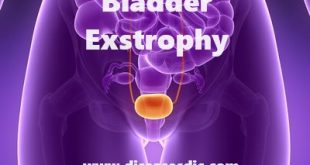Definition of Brain Death
Brain death is a clinical and legal definition of death. Sometimes, when a person is declared brain dead, their heart may still be still beating and their chest may rise and fall with every breath from the ventilator. The skin might be warm and a person who is brain dead may appear to be resting.
These physical functions may be present in a person who is brain dead because the physical damage is actually hidden in the brain, rather than visible on the body.
Brain cells do not effectively regenerate. This makes it difficult for the brain to recover from injury. Serious brain damage can occur due to a stroke, heart attack, or head trauma. When brain cells undergo permanent damage, they cannot be replaced. Major loss of brain function results in brain death.
How is Brain Death different from being in a coma?
A patient in a coma continues to have brain function. When brain death happens, all neurological activity stops and cannot be revived. Brain death is death – no improvement or recovery is possible.
Pathophysiology
The physiology of brain death is similar regardless of the etiology. Inadequate tissue oxygenation leads to a progressive cascade of further edema, increasing intracranial pressure, a further decrease in cerebral perfusion and eventual herniation, or complete cessation of blood flow and aseptic necrosis of brain tissue.
In anoxic brain injuries, mainly inadequate cardiopulmonary resuscitation following a cardiopulmonary arrest, tissue hypoxia leads to the release of cytotoxic material that leads to progressive cerebral edema, and eventually, the cascade described above.
For traumatic brain injuries or other intracranial injuries, the presence of increasing intracranial pressure as a result of injury beyond the mean arterial pressure will prevent adequate oxygenation of neuronal tissues. This situation will result in further injury, edema, and, eventually, the process initially described above.
Causes of brain death
Brain death can happen when the blood and/or oxygen supply to the brain is stopped.
This can be caused by:
- Cardiac arrest – when the heart stops beating and the brain is starved of oxygen
- A heart attack – when the blood supply to the heart is suddenly blocked
- A stroke – when the blood supply to the brain is blocked or interrupted
- A blood clot – a blockage in a blood vessel that disturbs or blocks the flow of blood around your body
It can also be caused by:
- A severe head injury
- A brain haemorrhage
- Infections, such as encephalitis
- A brain tumour
Risk factors
- Prehospital hypotension is the main risk factor for an early evolution to brain death in head trauma
- Also, patients that have prolonged hypoperfusion and neurohormonal imbalance after the post resuscitation phase present an increased risk of brain stem death.
Signs of brain death
Some of the signs include:
- The pupils don’t respond to light.
- The person shows no reaction to pain.
- The eyes don’t blink when the eye surface is touched (corneal reflex).
- The eyes don’t move when the head is moved (oculocephalic reflex).
- The eyes don’t move when ice water is poured into the ear (oculo-vestibular reflex).
- There is no gagging reflex when the back of the throat is touched.
- The person doesn’t breathe when the ventilator is switched off.
- An electroencephalogram test shows no brain activity at all.
Complications
- Brain death is associated with complex hemodynamic, endocrine, and metabolic dysfunction that can lead to major complications.
- Untreated, this can progress to cardiovascular collapse with loss of valuable organs.
- Other complications are as follows: intravenous vasopressor requirement, coagulopathy, thrombocytopenia, diabetes insipidus, cardiac ischemia, lactic acidosis, renal failure, and acute respiratory distress syndrome
Consequences of and Considerations in Brain Death
Once brain death has been diagnosed, a patient is declared dead. A single brain death examination, including the apnea test, is the minimum standard for diagnosing brain death in adults. However, in children, recent guidelines recommend 2 separate brain death examinations as the minimum standard. Organ support, including mechanical ventilation and medications to maintain adequate blood pressure, may be continued after a declaration of brain death if the patient is a candidate for organ donation or is pregnant and a decision is made to continue support for the fetus.
Diagnosing Brain Death
There are a number of criteria for diagnosing brain death.
For a diagnosis of brain death to be made:
- A person must be unconscious and fail to respond to outside stimulation
- A person’s heartbeat and breathing can only be maintained using a ventilator
- There must be clear evidence that serious brain damage has occurred and it can’t be cured
Ruling out other conditions
Before testing for brain stem death can begin, doctors must carry out a series of checks to ensure that the symptoms aren’t being caused by other factors, such as:
- An overdose of illegal drugs, tranquillisers, poisons or other chemical agents
- An abnormally low body temperature (hypothermia)
- Severe under-activity of the thyroid gland
Once these factors have been ruled out, tests are carried out to confirm brain death. The diagnosis of has to be made by two senior doctors. Neither of them can be involved with the hospital’s transplant team.
The doctors will explain the tests to you and they’ll keep you informed about your loved one’s condition at all times.
Tests
The doctors will run a series of tests. Both doctors have to agree on the results for a diagnosis of brain death to be confirmed. The tests are carried out twice to minimize any chance of error.
The tests used to determine whether brain stem death has occurred are outlined below:
- A torch is shone into both eyes to see if they react to the light.
- The cornea (transparent outer layer of the eye), which is usually very sensitive, is stroked with a tissue or piece of cotton wool to see if the eye reacts.
- Pressure is applied to the forehead and the nose is pinched to see if there’s any movement in response.
- Ice-cold water is inserted into each ear, which would usually cause the eyes to move.
- A thin, plastic tube is placed down the trachea (windpipe) to see if it provokes gagging or coughing.
- The person is disconnected from the ventilator for a short period of time to see if they make any attempt to breathe on their own.
It will be diagnosed if a person fails to respond to all of these tests.
Occasionally, a person’s limbs or torso (the upper part of the body) may move, even after brain stem death has been diagnosed.
These spinal reflex movements are generated by the spinal cord and don’t involve the brain at all. Therefore, they won’t affect the diagnosis of brain death.
Reversing Brain Death: Far-fetched or feasible?
A determination of brain death means that the patient has died; brain death is irreversible. In fact, there is no clinical trial, transplant, surgery, medication, or treatment that can reverse brain death.
 Diseases Treatments Dictionary This is complete solution to read all diseases treatments Which covers Prevention, Causes, Symptoms, Medical Terms, Drugs, Prescription, Natural Remedies with cures and Treatments. Most of the common diseases were listed in names, split with categories.
Diseases Treatments Dictionary This is complete solution to read all diseases treatments Which covers Prevention, Causes, Symptoms, Medical Terms, Drugs, Prescription, Natural Remedies with cures and Treatments. Most of the common diseases were listed in names, split with categories.







